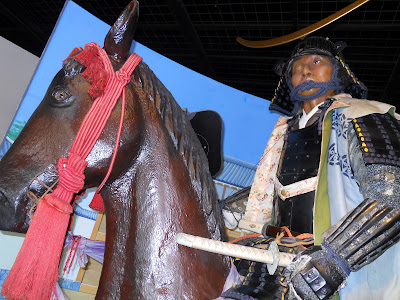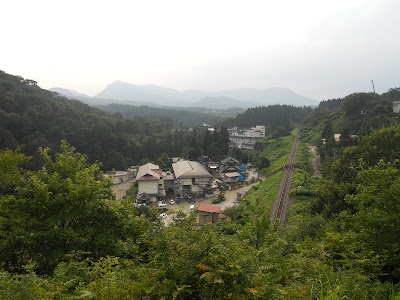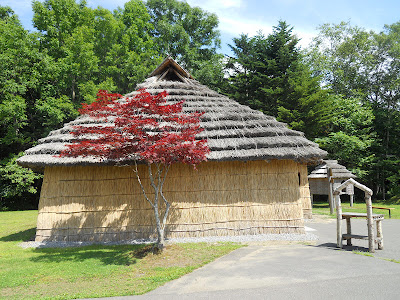Sendai came as a surprise. After
dawn-to-dusk train rides through the open fields of Tōhoku, all of a
sudden there erupted this massive metropolis, and for a moment I felt
as though I was back in central Tokyo (or one of the dozen central
Tokyos).
Here was a serious city, and one
identifiably of the South: the heat had returned with a vengeance,
the humidity sweltered off the scales, and the trains became more
crowded – and their occupants more grim in the face – in
proportion to the southerly distance covered.
Sendai's image, captured in a
train station window: giant Tanabata star festival streamers;
Matsushima, to which we will return; and who is that fellow at the
top with the crescent-shaped crest?
It doesn't take long to catch on
that he and his headgear are something of an icon in the Sendai area.
His contemporary guise as Miyagi's mascot – visible everywhere – seems to have altered his head to look like an onigiri, but still he stands on the governor's shoulder and scrutinizes everything.
He
is the “one-eyed dragon”, Date
Masamune
(伊達
政宗),
his image celebrated as though the city owes him its very existence –
which might not be far from the truth. His story is a fascinating
prism of Japan's chaotic age of inner conflict, and even more so of
the different view of it you get from a tenacious Tōhoku
perspective.












.jpg)
























